Understanding Air Purifier Electricity Consumption: How Much Electric Does an Air Purifier Use?
In an era where health and well-being have taken center stage, the quality of the air we breathe within the confines of our homes has never been more critical. The growing awareness of indoor air quality as a vital contributor to our overall health has led to an increasing demand for solutions that can help us breathe cleaner, fresher air. Among these solutions, air purifiers have emerged as indispensable guardians of our indoor environments.
As we delve into the world of indoor air quality, it becomes evident that air purifiers play a pivotal role in enhancing the air we breathe within our homes and workplaces. These ingenious devices have the power to sift out pollutants, allergens, and microscopic particles, creating an atmosphere that is not only more comfortable but also significantly healthier.
However, with the benefits of cleaner air come questions of practicality and sustainability. Among these inquiries, one central question looms large: "How much electricity does an air purifier consume?" This inquiry is not just a matter of cost but a consideration of our environmental footprint and energy conservation. To navigate this essential query, we must embark on a journey to understand the factors that influence air purifier electricity consumption and discover strategies to optimize their energy use. In doing so, we can strike a harmonious balance between breathing cleaner air and being mindful stewards of our planet's resources.
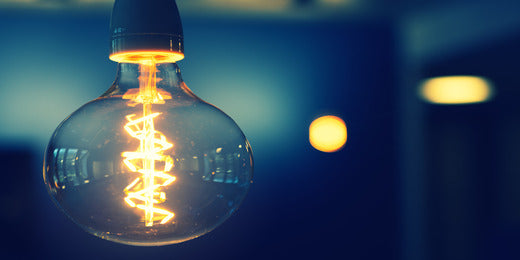
Factors Influencing Air Purifier Electricity Consumption
Air purifiers are valuable tools for improving indoor air quality, but they come with varying levels of electricity consumption. Understanding the factors that influence how much electric an air purifier uses is essential for both efficient operation and cost management. In this section, we will delve into some of these critical factors:
1. Wattage and Power Rating
- In the context of air purifiers, wattage refers to the electrical power consumption of the device. It is measured in watts and represents the rate at which the purifier uses electricity to perform its air-cleaning functions.
- Air purifiers typically have wattage ratings that fall within the range of 10 to 100 watts. Smaller, more compact models tend to have lower wattages, while larger, high-performance units may have higher wattage ratings.
- The wattage of an air purifier directly correlates with its electricity consumption. Higher-wattage purifiers use more electricity, which can result in increased energy costs. However, higher-wattage models often have more robust air-cleaning capabilities, offering a balance between performance and energy efficiency.
2. Fan Speed and Settings
- Air purifiers often come equipped with multiple fan speed settings. The fan speed directly influences the rate at which air is drawn through the filtration system. Higher fan speeds generally result in faster air cleaning.
- Higher fan speeds, while effective at rapid air purification, come at the cost of higher electricity consumption. Conversely, lower fan speeds use less electricity but may require more time to achieve the desired air quality. Users should select the fan speed that aligns with their needs, considering both performance and energy efficiency.
3. Usage Duration
- The amount of time an air purifier operates directly impacts its electricity consumption. Continuous operation will lead to higher energy consumption, whereas running the purifier only when necessary can result in energy savings.
- To optimize power consumption, consider using the air purifier during periods of poor air quality, when allergens are prevalent, or when you are in the room. Additionally, many air purifiers come with timers or scheduling features that allow users to automate on/off cycles for specific times.
4. Room Size
- The size of the room where you place the air purifier is a crucial factor. In larger rooms, the purifier may need to operate at higher fan speeds to effectively clean the air, which can result in increased electricity usage.
- It's essential to choose an air purifier that matches the room's size. An oversized purifier can consume more electricity than necessary, while an undersized one may struggle to maintain air quality efficiently. Manufacturers often provide recommendations based on room size for their purifiers.
5. Filter Type and Technology
Air purifiers employ various filtration technologies to remove contaminants from the air. Understanding these technologies and their energy efficiency can help users make informed choices:
- HEPA Filters (High-Efficiency Particulate Air): HEPA filters are highly effective at capturing particles as small as 0.3 microns, including dust, pollen, and pet dander. They are a common and energy-efficient choice for air purifiers, as they don't require excessive energy to operate.
- Activated Carbon Filters: Activated carbon filters excel at removing odors, gases, and volatile organic compounds (VOCs). While they can contribute to improved indoor air quality, they are generally energy-efficient because their function relies on adsorption rather than energy-intensive processes.
- Electrostatic Precipitators: These air purifiers use an electrostatic charge to attract and capture particles. While effective, some electrostatic precipitators may consume more electricity due to the need for ionization and collection plates. However, newer models are designed to be energy-efficient.
- UV-C Light: Ultraviolet-C (UV-C) light technology can kill microorganisms like bacteria and viruses. UV-C purifiers are generally energy-efficient as they rely on low-energy UV lamps to operate.
- Ozone Generators: Ozone generators can remove odors but are controversial due to the ozone they produce, which can be harmful to health. Some older models may consume more electricity, but modern, energy-efficient alternatives are available.
- Electronic Filters: These filters use an electric charge to capture particles. Some electronic filters can be energy-efficient, especially those with adjustable settings that allow users to control the energy consumption.

6. Energy-Efficient Models
Energy-efficient air purifiers not only help reduce electricity bills but also contribute to environmental sustainability. Here are some considerations when seeking energy-efficient air purifiers:
- ENERGY STAR Ratings: Look for air purifiers that have earned the ENERGY STAR label. ENERGY STAR-rated models are designed to meet strict energy efficiency guidelines set by the U.S. Environmental Protection Agency (EPA). These purifiers are both eco-friendly and cost-effective to run.
- Smart Features: Some air purifiers incorporate smart features, such as sensors that detect air quality and adjust operation accordingly. These features can optimize energy use by running the purifier only when needed.
- Variable-Speed Fans: Air purifiers equipped with variable-speed fans allow users to select fan speeds that match the air quality and their energy-saving goals. Lower fan speeds generally consume less electricity.
- Sleep Modes: Many air purifiers have sleep modes that reduce fan speed and noise levels during nighttime operation, conserving energy while maintaining air quality.
- Timers: Built-in timers allow users to schedule when the air purifier operates. This feature can be particularly useful for turning off the device during periods of clean air or when the room is unoccupied.
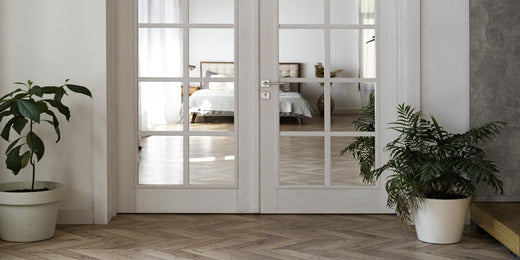
Tips for Optimizing Air Purifier Electricity Consumption
Air purifiers are valuable tools for improving indoor air quality, but their electricity consumption can vary depending on several factors. To ensure you're getting the most out of your air purifier while keeping energy usage in check, consider the following tips:
1. Choose the Right Air Purifier
- When searching for an air purifier, prioritize energy efficiency. Look for models with ENERGY STAR ratings or other energy-efficient features.
- Select an air purifier that aligns with your air quality requirements and room size. Avoid overbuying or selecting an excessively powerful unit for smaller spaces, as this can lead to unnecessary energy consumption.
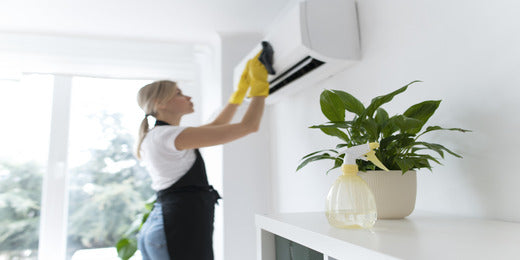
2. Adjust Fan Speed Wisely
- Understand the relationship between fan speed and energy consumption. Use higher fan speeds during periods of poor air quality or when rapid air cleaning is needed. Lower fan speeds can be employed for maintaining air quality once it's improved.
- In areas with high levels of airborne pollutants, such as during cooking or in allergy seasons, higher fan speeds can provide quicker relief. Lower fan speeds are ideal for nighttime operation, ensuring quieter and energy-efficient air purification.
3. Manage Usage Duration
- Determine when you most need air purification, such as during allergy season, when pets are shedding, or when cooking. Run the air purifier during these peak times to optimize energy efficiency.
- Many air purifiers come equipped with timers and smart features that allow users to schedule when the device operates. Use these functions to automatically turn off the purifier during times of clean air or when the room is unoccupied, reducing unnecessary electricity consumption.
4. Size It Right
Choosing the right-sized air purifier is a crucial aspect of optimizing its energy consumption and effectiveness in improving indoor air quality. Here's how to ensure you size it right:
- Reinforce the importance of choosing an appropriately sized air purifier for a room: Emphasize that selecting an air purifier that matches the room's size is essential. An oversized purifier may consume more electricity than necessary, while an undersized one may struggle to clean the air efficiently.
- Offer practical tips for measuring room size and calculating air purifier needs: Encourage readers to measure the square footage of the room they intend to purify. Then, look for air purifiers with a Clean Air Delivery Rate (CADR) rating that matches or exceeds the room's square footage. CADR ratings indicate how much air an air purifier can clean in a given amount of time. Matching the CADR to room size ensures that the purifier can effectively clean the air without overworking the unit.
5. Filter Maintenance
Proper filter maintenance is essential not only for maintaining energy efficiency but also for ensuring the air purifier's overall performance. Here's why filter maintenance matters:
- Stress the significance of regular filter maintenance in maintaining energy efficiency: Emphasize that clean filters are crucial for the optimal performance of an air purifier. A dirty or clogged filter can cause the purifier's fan to work harder, resulting in increased power consumption.
- Explain how dirty filters can affect both air quality and energy consumption: Dirty filters hinder an air purifier's ability to capture airborne particles effectively. This not only reduces air quality but also forces the purifier to run longer or at higher fan speeds to compensate for the reduced airflow. This increased workload translates to higher electricity consumption.
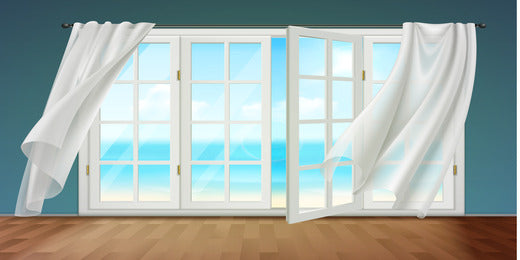
Conclusion
In the pursuit of cleaner and healthier indoor air, the question of air purifier electricity consumption emerges as a pivotal consideration. As we conclude our exploration of this topic, let's recap the key takeaways and emphasize the importance of informed choices:
- Understanding Wattage and Fan Speed: Wattage and fan speed are critical factors influencing air purifier electricity consumption. Higher wattage and fan speeds can provide faster air cleaning but may lead to increased energy use. Choose settings that match your air quality needs.
- Optimizing Usage Duration: Managing the duration of air purifier operation is essential for energy conservation. Utilize built-in timers and smart features to automate on/off cycles and ensure the purifier runs when needed.
- Room Size Matters: The size of the room significantly impacts air purifier performance and energy use. Select an appropriately sized air purifier based on room square footage and Clean Air Delivery Rate (CADR) ratings to balance effectiveness and efficiency.
- Filter Maintenance is Key: Regular filter maintenance is crucial for energy efficiency and overall air purifier performance. Dirty filters can compromise both air quality and energy consumption. Keep filters clean and replace them as recommended by the manufacturer.

Informed choices are the cornerstone of achieving clean indoor air while conserving energy and reducing operating costs. By selecting energy-efficient air purifiers, adjusting settings wisely, and practicing good filter maintenance, you can strike a harmonious balance between optimal indoor air quality and responsible power consumption.
Remember that the journey toward cleaner air and energy conservation begins with your choices. Be a conscious consumer, and let your decisions reflect your commitment to a healthier, more sustainable living environment. In doing so, you not only enhance your well-being but also contribute to a greener and more eco-friendly future.


































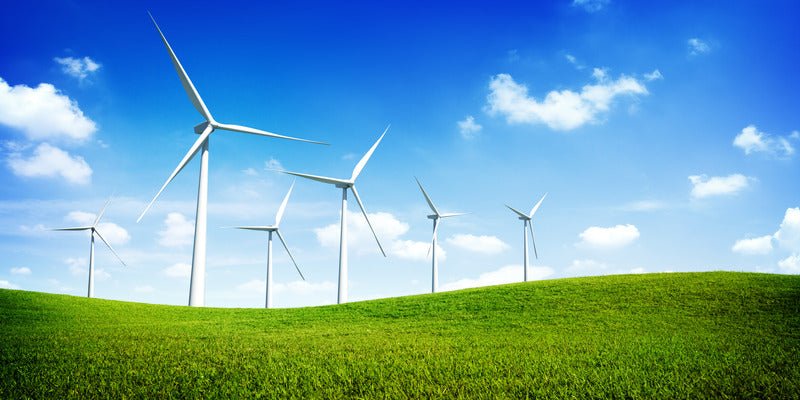
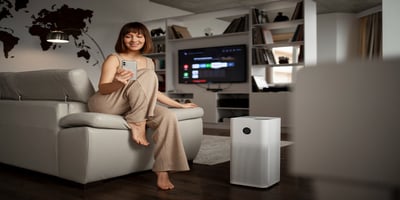
.jpg?height=200&name=photo_2024-06-13_19-53-16%20(1).jpg)

.jpg?height=200&name=image6%20(2).jpg)